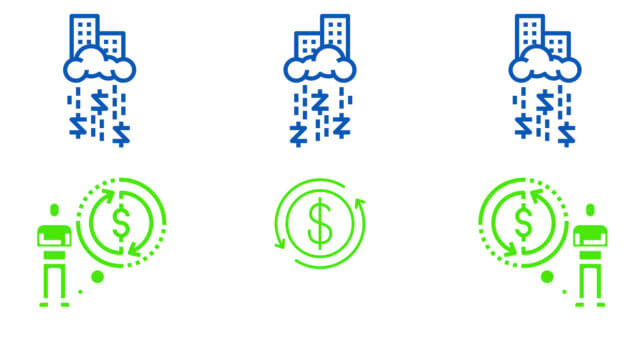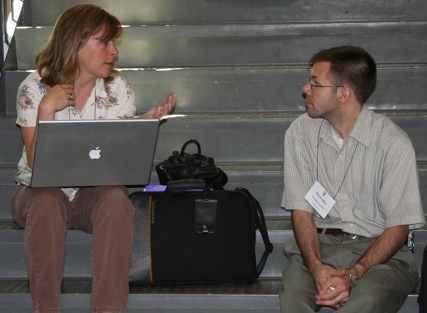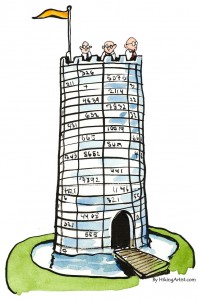How meeting professionals can measure and improve event ROI in a post-pandemic world
[My June 2021 guest post for BlueJeans by Verizon on event ROI.]
What is event ROI?
Return On Investment (ROI) is such a familiar business concept that it’s easy to gloss over the complexities of defining it in the context of events. So let’s define event ROI in a little more detail.
Typically, ROI is thought of as a financial metric to evaluate the profitability of an investment. Some event stakeholders use ROI as a financial tool to evaluate the profitability of holding or attending an event. Others view it as a non-financial metric. For example, an academic invited to speak at a meeting might compare their investment of time and money spent attending with their expected return of increased status, easier access to colleagues, or greater likelihood of obtaining tenure.
Rather than spend more time delving into the complexities of defining event ROI (explore further at the Event ROI Institute), suffice it to say that event ROI is an intricate attempt to measure value for event stakeholders.
Who gets ROI at an event?
Events have multiple stakeholders. All events have owners, suppliers of services and products, and attendees. And there are often other stakeholders, such as associated organizations, exhibitors, employees, and volunteers.
Which stakeholders receive the event ROI?
Ideally, all of them!
For example:
- Event owners expect to profit financially from the event, or its contribution to shareholder value, or its support of an organization’s mission.
- Suppliers of services and products plan to make a financial profit from their investment of time and resources, and perhaps firm up additional profitable business too.
- Exhibitors hope to gain new customers, maintain or strengthen existing business relationships, increase brand awareness, and promote their offerings to a wider audience, thus obtaining greater market share.
- Attendees profit by learning about top-of-mind topics and issues of interest, getting their questions answered, building their knowledge peer network, and maintaining or increasing their status and visibility.
Notice that different event stakeholders think of ROI in very different ways. Successful win-win events provide attractive ROI for every stakeholder.
Event ROI and the pandemic
With the loss of most in-person meetings during the pandemic, stakeholders with tangible investments in face-to-face meetings have an ROI of zero. The meeting industry continues to reel under a wave of cancellations, postponements, and uncertainty.
Post-pandemic, potential event ROI is not significantly different from what it was before, except that the delivery models for meetings are going to be different. It seems likely that the mix will include:
- Fewer in-person;
- More online; and
- More hybrid (in-person and online) meetings.
Considerations for event owners
Calculating post-pandemic ROI is especially difficult for event owners because it’s not clear yet:
- What the mix of these three delivery models will be.
- How eager people will be to attend in-person events.
- Whether there are attractive ROI models for online exhibitors, who are typically significant revenue contributors to in-person meetings.
- What will people be willing to pay for online attendance, compared to what they paid for pre-pandemic face-to-face meetings?
In addition, the meeting industry is still clarifying the production costs involved with larger online meetings. After a year of hasty learning how to produce online events that satisfy still indeterminate norms for event production quality and reliability, it’s still unclear what a typical online meeting will involve and cost for each of the different pre-pandemic meeting sectors.
Considerations for event supplies and attendees
Calculating post-pandemic ROI for suppliers and attendees is unlikely to be markedly different from what they did before. Attendees, of course, will now often have the option to attend online or in person. It will be interesting to see the choices people make. One clear trend has been the increase in attendance for meetings that have successfully transitioned to online from in-person. Larger audiences at such events may be a way to increase revenue (though at a lower cost-per-seat) over time.
How has the COVID-19 pandemic positively affected the meeting industry?
Yes, the coronavirus pandemic has had a terrible impact on the meeting industry. But, there’s a silver lining.
During the pandemic, online meetings replaced many in-person meetings. Producing and experiencing online meetings has been challenging. Yet stakeholders have discovered numerous positive aspects, including:
- You’re instantly “there”. Travel expense and time is eliminated, with an associated sustainability bonus.
- It’s become clear that many in-person meetings can be conducted just as effectively and successfully online. Meeting stakeholders now have much more experience as to when online can replace in-person meetings.
- Participants’ increased familiarity and acceptance of online meetings have led to the rise of new ways of meeting for organizations. I’ve worked with clients who have replaced large in-person meetings of physically separated senior executives with more frequent, smaller, tightly targeted online meetings. These meetings have been so well received, that they will continue online post-pandemic.
- Online meetings, which attendees can easily leave or ignore, have increased stakeholder awareness of the importance and value of using engaging, interactive meeting formats.
Event platforms for connection
The pressure to find comprehensive replacements for face-to-face meetings has sped the development of technology platforms that better support connection between participants. Pre-pandemic online platforms were designed to provide broadcast-style meeting formats. A host of new online platforms, like Gatherly, Wonder, and others, allow fluid, participant-driven connection much closer to that found in an in-person meeting social. These platforms provide the “hallway conversations” missing from larger platforms, like Zoom, BlueJeans, and Teams.
Finally, the pandemic has helped the meeting industry to better appreciate the unique advantages that pre-pandemic, in-person events could offer. The value of our human desire to meet in person, unfettered by masks and social distancing, has only been strengthened by its absence. The meeting industry will never be the same after this pandemic. But, thanks to it, we have all gained a heightened awareness of the importance of face-to-face meetings in our lives.
Improving event ROI
The COVID-19 pandemic has given the meeting industry and its customers a painful but potentially valuable opportunity to rethink events.
The most promising way to improve event ROI involves simple but fundamental changes to the processes and meeting formats we use at our meetings.
During the last decade, the meeting industry has become aware of the importance of providing meetings that are highly relevant, interactive, and engaging. In the past, once you induced attendees to attend an in-person meeting they became captives of the meeting program. They were trapped in the middle of a row of seats during sessions that were often irrelevant/poorly presented/boring.
Over a year of online meetings with attendees routinely tuning out after a few minutes, has clearly shown the poor quality of the majority of traditional meeting sessions.
Improving meetings
Decades of experience show that you can improve all kinds of meetings, whether in-person or online, by designing them to:
- Provide opening opportunities for participants to discover who else is present, what they want to discuss and learn about, and the collective expertise and experience that’s available to tap.
- Include significant time for participant-driven sessions. In other words, the meeting provides a real-time structure for participants to choose what they want to discuss and learn, and then create sessions that meet those wants and needs.
- Create and strengthen community throughout the meeting. Meetings are perhaps the most powerful ways to build community. This pays rich long-term dividends for everyone involved. Yet traditional meetings provide little if any explicit support for community building.
When participants are truly happy with the meetings they attend, all stakeholders benefit. The adoption of participant-driven and participation-rich meeting formats improves event ROI. Why? Because such events are better at satisfying stakeholders’ actual wants and needs. It’s not surprising that responsive and interactive event designs and sessions are steadily replacing the lecture-centric formats of many formerly webinar-style meetings.
Event ROI is likely to improve in other ways, of course. For example, as online meeting technology matures, production costs will likely drop, improving event owners’ bottom line. But I think the greatest (and easiest) improvements to event ROI involve adopting human process technologies that allow meetings to become what participants actually want and need.





